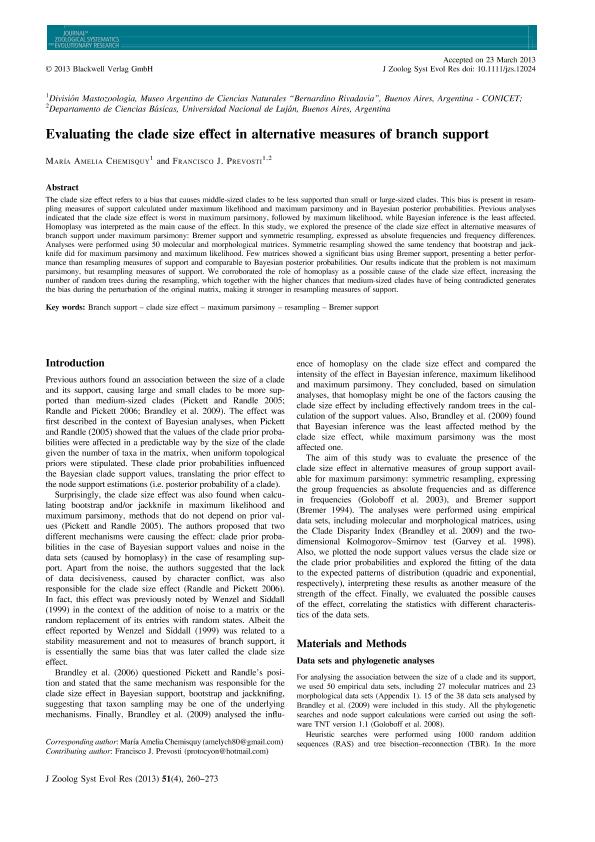Artículo
Evaluating the clade size effect in alternative measures of branch support
Fecha de publicación:
11/2013
Editorial:
Wiley
Revista:
Journal of Zoological Systematics and Evolutionary Research
ISSN:
0947-5745
Idioma:
Inglés
Tipo de recurso:
Artículo publicado
Clasificación temática:
Resumen
The clade size effect refers to a bias that causes middle-sized clades to be less supported than small or large-sized clades. This bias is present in resampling measures of support calculated under maximum likelihood and maximum parsimony and in Bayesian posterior probabilities. Previous analyses indicated that the clade size effect is worst in maximum parsimony, followed by maximum likelihood, while Bayesian inference is the least affected. Homoplasy was interpreted as the main cause of the effect. In this study, we explored the presence of the clade size effect in alternative measures of branch support under maximum parsimony: Bremer support and symmetric resampling, expressed as absolute frequencies and frequency differences. Analyses were performed using 50 molecular and morphological matrices. Symmetric resampling showed the same tendency that bootstrap and jackknife did for maximum parsimony and maximum likelihood. Few matrices showed a signicant bias using Bremer support, presenting a better performance than resampling measures of support and comparable to Bayesian posterior probabilities. Our results indicate that the problem is not maximum parsimony, but resampling measures of support. We corroborated the role of homoplasy as a possible cause of the clade size effect, increasing the number of random trees during the resampling, which together with the higher chances that medium-sized clades have of being contradicted generates the bias during the perturbation of the original matrix, making it stronger in resampling measures of support.
Palabras clave:
Branch Support
,
Clade Size Effect
,
Maximum Parsimony
,
Resampling
,
Bremer Support
Archivos asociados
Licencia
Identificadores
Colecciones
Articulos(MACNBR)
Articulos de MUSEO ARG.DE CS.NAT "BERNARDINO RIVADAVIA"
Articulos de MUSEO ARG.DE CS.NAT "BERNARDINO RIVADAVIA"
Citación
Chemisquy, Maria Amelia; Prevosti, Francisco Juan; Evaluating the clade size effect in alternative measures of branch support; Wiley; Journal of Zoological Systematics and Evolutionary Research; 51; 4; 11-2013; 260-273
Compartir
Altmétricas




